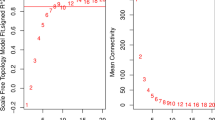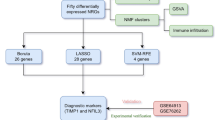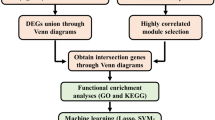Abstract
Asthma is a chronic inflammatory disease of the airways that leads to various degrees of recurrent respiratory symptoms affecting patients globally. Specific subgroups of asthma patients have severe disease leading to increased healthcare costs and socioeconomic burden. Despite the overwhelming prevalence of the asthma, there are limitations in predicting response to therapy and identifying patients who are at increased risk of morbidity. This syndrome presents with common clinical signs and symptoms; however, awareness of subgroups of asthma patients with distinct characteristics has surfaced in recent years. Investigators attempt to describe the phenotypes of asthma to ultimately assist with diagnostic and therapeutic applications. Approaches to asthma phenotyping are multifold; however, it can be partitioned into 2 essential groups, clinical phenotyping and molecular phenotyping. Innovative techniques such as bipartite network analysis and visual analytics introduce a new dimension of data analysis to identify underlying mechanistic pathways.


Similar content being viewed by others
References
Papers of particular interest, published recently, have been highlighted as: • Of importance •• Of major importance
National Institutes of Health. National Heart, Lung, and Blood Institute. National Asthma Education and Prevention Program. Expert Panel Report 3: guidelines for the diagnosis and management of asthma. August 2007. NIH publication no. 07-4051. Available at: http://www.nhlbi.nih.gov/guidelines/asthma/index.htm. Accessed March 2012.
Bousquet J, Khaltaev N. Global surveillance, prevention, and control of chronic respiratory diseases: a comprehensive approach. Global Alliance against Chronic Respiratory Disease. Geneva: World Health Organization; 2007.
Calhoun WJ, Sutton LB, Emmett A, Dorinsky PM. Asthma variability in patients previously treated with B2agonists alone. J Allergy Clin Immunol. 2003;112:1088–94.
Weiss KB, Gergen PJ, Hodgson TA. An economic evaluation of asthma in the United States. N Engl J Med. 1992;326:862–6.
Grunig G, Warnock M, Wakil AE, Venkayya R, Brombacher F, Rennick DM, et al. Requirement for IL-13 independently of IL-4 in experimental asthma. Science. 1998;282:2261–3.
Moore WC, Peters SP. Severe asthma: an overview. J Allergy Clin Immunol. 2006;117:487–94.
Busse WW, Lemanske Jr RF. Asthma. N Engl J Med. 2001;344:350–62.
Abbas AK, Murphy KM, Sher A. Functional diversity of helper T lymphocytes. Nature. 1996;383:787.
Walker C, Bode E, Boer L, Hansel TT, Blaser K, Virchow JC Jr. Allergic and nonallergic asthmatics have distinct patterns of T-cell activation and cytokine production in the peripheral blood and bronchoalveolar lavage. Am Rev Respir Dis. 1992;146:109–15.
Wills-Karp M, Luyimbazi J, Xu X, Schofield B, Neben TY, Karp CL, et al. Interleukin-13: central mediator of allergic asthma. Science. 1998;282(5397):2258–61.
Storms WW. Review of exercise-induced asthma. Med Sci Sports Exercise. 2003;35:1464–70.
Edmunds AT, Tooley M, Godfrey S. The refractory period after exercise-induced asthma: its duration and relation to the severity of exercise. Am Rev Respir Dis. 1978;117:247–54.
Anderson SD, Daviskas E. The mechanism of exercise-induced asthma is… J Allergy Clin Immunol. 2000;106:453–9.
Hallstrand TS, Curtis JR, Koepsell TD, Martin DP, Schoene RB, Sullivan SD, et al. Effectiveness of screening examinations to detect unrecognized exercise-induced bronchoconstriction. J Pediatr. 2002;141:343–8.
Godard P, Chanez P, Siraudin L, et al. Costs of asthma are correlated with severity. Eur Respir J. 2002;19:61–7.
Serra-Battles J, Plaza V, Morejon E, Comella A, Brugués J. Costs of asthma according to the degree of severity. Eur Respir J. 1998;12:1322–6.
•• Jarjour NN, Erzurum SC, Bleecker ER, Calhoun WJ, Castro M, Comhair SA, et al. Am J Respir Crit Care Med. 2012;185:356–62. This is the latest summary of the research conducted by the Severe Asthma Research Program “SARP”. It provides clinicians the basis of the clinical clusters and the latest ongoing research strategies.
Moore WC, Meyers DA, Wenzel SE, Teague WG, Li H, Li X, D’Agostino R Jr, et al. Am J Respir Crit Care Med. 2010;181:315–23.
Wenzel SE, Schwartz LB, Langmack EL, Halliday JL, Trudeau JB, Gibbs RL, et al. Evidence that severe asthma can be divided pathologically into two inflammatory subtypes with distinct physiologic and clinical characteristics. Am J RespirCrit Care Med. 1999;160:1001–8.
Chanez P, Wenzel SE, Anderson GP, Anto JM, Bel EH, Boulet LP, et al. Severe asthma in adults: what are the important questions? J Allergy Clin Immunol. 2007;119:1337–48.
Wills-Karp M, Luyimbazi J, Xu X, Schofield B, Neben TY, Karp CL, et al. Interleukin-13: central mediator of allergic asthma. Science. 1998;18(282):2258–61.
Wenzel SE, Szefler SJ, Leung DY, Sloan SI, Rex MD, Martin RJ. Bronchoscopic evaluation of severe asthma: persistent inflammation associated with high dose glucocorticoids. Am J Respir Crit Care Med. 1997;156:737–43.
Shaw DE, Berry MA, Hargadon B, McKenna S, Shelley MJ, Green RH, et al. Association between neutrophilic airway inflammation and airflow limitation in adults with asthma. Chest. 2007;132:1871–5.
Green RH, Brightling CE, Woltmann G, Parker D, Wardlaw AJ, Pavord ID, et al. Analysis of induced sputum in adults with asthma: identifi cation of subgroup with isolated sputum neutrophilia and poor response to inhaled corticoids. Thorax. 2002;57:875–9.
Sur S, Crotty TB, Kephart GM, Hyma BA, Colby TV, Reed CE, et al. Sudden-onset fatal asthma. A distinct entity with few eosinophils and relatively more neutrophils in the airway submucosa. 1993;148(3):713–9
Woodruff PG, Boushey HA, Dolganov GM, Barker CS, Yang YH, Donnelly S, et al. Genome wide profiling identifies epithelial cell genes associated with asthma and with treatment response to corticosteroids. Proc Natl Acad Sci USA. 2007;104:15858–63.
Woodruff PG, Modrek B, Choy DF, Jia G, Abbas AR, Ellwanger A, et al. T-helper type 2-driven inflammation defines major subphenotypes of asthma. Am J Respir Crit Care Med. 2009;180:388–95.
Brasier AR, Victor S, Boetticher G, Ju H, Lee C, Bleecker ER, et al. Molecular phenotyping of severe asthma using pattern recognition of bronchoalveolar lavage-derived cytokines. J Allergy Clin Immunol. 2008;121:30–7.
Brasier AR, Victor S, Ju H, Busse WW, Curran-Everett D, Bleecker E, et al. Predicting intermediate phenotypes in asthma using bronchoalveolar lavage-derived cytokines. Clin Transl Sci. 2010;3(4)147–5.
Goh KI, Cusick ME, Valle D, Childs B, Vidal M, Barabási AL. The human disease network. Proc Natl Acad Sci U S A. 2007;104:8685–90.
Ideker T, Sharan R. Protein networks in disease. Genome Res. 2008;18:644–52.
Renkonen J, Joenväärä S, Parviainen V, et al. Network analysis of single nucleotide polymorphisms in asthma. J Asthma Allergy. 2010;9(3):177–86.
O’Neil SE, Sitkauskiene B, Babusyte A, Krisiukeniene A, Stravinskaite-Bieksiene K, Sakalauskas R, et al. Network analysis of quantitative proteomics on asthmatic bronchi: effects of inhaled glucocorticoid treatment. Respir Res. 2011;22:12:124.
• Newman MEJ. Networks: an introduction. Oxford: Oxford University Press; 2010. This text provides insight into network analysis for clinicians and its importance in clinical arena.
Bhavnani SK, Victor S, Calhoun WJ, et al. How cytokines co-occur across asthma patients: from bipartite network analysis to a molecular-based classification. J Biomed Inform. 2011;44 Suppl 1:S24–30.
Newman M. The structure and function of complex networks. SIAM Rev. 2003;45:167–256.
Bhavnani SK, Ganesan A, Hall T, et al. Discovering hidden relationships between renal diseases and regulated genes through 3D network visualizations. BMC Res Notes. 2010;11;3:296.
Lu M, Zhang Q, Deng M, Miao J, et al. An analysis of human microRNA and disease associations. PLoS One. 2008;3:e3420.
Ooi CH, Oh HK, Wang HZ, et al. A densely interconnected genome-wide network of microRNAs and oncogenic pathways revealed using gene expression signatures. PLoS Genet. 2011;7(12):e1002415. doi:10.1371/journal.pgen.1002415.
Nacher JC, Schwartz JM. Modularity in protein complex and drug interactions reveals new polypharmacological properties. PLoS One. 2012;7:e30028.
Acknowledgments
The authors acknowledge support from the UTMB CTSA grant. Drs. Pillai and Divekar contributed equally to this study.
Disclosure
Dr. Brasier has received grant support from the National Institutes of Health. Dr. Calhoun has received grant and travel support from the NHLBI/Asthma Clinical Research Network. Drs. Pillai, Divekar, and Bhavnani reported no potential conflicts of interest relevant to this article.
Author information
Authors and Affiliations
Corresponding author
Additional information
Regina R. Pillai and Rohit Divekar contributed equally to this work.
Rights and permissions
About this article
Cite this article
Pillai, R.R., Divekar, R., Brasier, A. et al. Strategies for Molecular Classification of Asthma Using Bipartite Network Analysis of Cytokine Expression. Curr Allergy Asthma Rep 12, 388–395 (2012). https://doi.org/10.1007/s11882-012-0279-y
Published:
Issue Date:
DOI: https://doi.org/10.1007/s11882-012-0279-y




